Rose Chippendale: description, cultivation and reviews of the variety
Garden beauties roses, have been chosen by breeders for a long time. Every year scientists produce more and more new types of flowers, which occupy a dominant place in park and landscape design. Usually, the queens of the garden, in addition to their high decorativeness, are famous for their unpretentious care.
Rose Chippendale, bred by German breeders, is referred to as scrubs. There are a number of reasons for this. Firstly, the flower shape of the variety is classic, it has a pronounced aroma. Secondly, Chippendale belongs to the shrub species of an ornamental plant that is easy to grow. And these varieties are intended for landscaping parks, suburban areas.
Content:
- Description and conditions for growing a flower
- Breeding methods, plant planting rules
- Shrub Care Tips
- Pruning roses, preparing for winter
- Diseases and pests of a garden flower
- The use of a variety in landscape design
- Benefits of growing roses, reviews
Description and conditions for growing a flower
An ornamental plant is a shrub slightly more than a meter high with compact shoots and dark green foliage. A highly developed bush reaches about a meter in width. There are almost no thorns on its shoots.
The value of a rose is in its attractive colors of all shades of pink and orange, with a large number of double petals, the number of which reaches 70 pieces.
The opened bud is ten to twelve centimeters in diameter. During flowering, in early and late summer, Chippendale bushes give off a delicate, pronounced aroma. The variety is characterized by resistance to some diseases of ornamental culture. The scorching rays of the sun, sudden temperature changes, and heavy rains are not terrible for the shrubs.
Scrub roses are suitable for cutting, as they do not fade for a long time, preserving the integrity of the petals, and a delicate aroma. The Chippendale bushes are actively used by landscape designers to create garden compositions.
An unpretentious decorative culture requires certain conditions for its full growth and development:
- The site is chosen for rose bushes, sunny, with little shade during the day.
- The plant needs good ventilation of the bush. And it is better to protect the plantings from rains and strong winds.
- The main requirement for the soil is its neutral acidity.
- The soil substrate should be light and nutritious. It is important that it easily permeates air and moisture.
- Groundwater should not be close to the surface of the site. Waterlogged soil will lead to decay of plant roots.
- A rose blooms best if the air temperature does not drop below fifteen degrees, and the humidity is no more than sixty percent.
If the conditions for the queen of the garden are met, then the buds on the shrub will be brighter, and the shoots will be more powerful.
Breeding methods, plant planting rules
To preserve the basic qualities of the variety, the flower must be propagated by vegetative methods. These include reproduction cuttings... Cuttings are taken from faded shoots, cutting out a part of 15 centimeters in size. The resulting planting material is buried in the ground, deepening five centimeters into the ground.
Before planting, the stalk can be placed in a solution of a growth stimulator of the Kornevin type. First, the cuttings are created in a greenhouse. After the appearance of the roots, the film is removed. You can transplant a seedling into a garden to a permanent place after three years, when it gets stronger.
Reproduction by layering is as follows:
- The lateral process, which has a strong stem, is instilled.
- To fix the lower part of the process, use a garden pin or wire.
- Water the cuttings regularly.
- When buds appear on the shoot, they are cut off.
- As soon as the sprout takes root, it is separated from the mother bush, transplanted to a site selected suitable for the plant.
Planting a Chippendale rose begins with preparing a hole for the bush. Its dimensions should be 40x40 centimeters. A drainage layer, humus or peat is added to the hole. Before planting, the rose is cut, leaving a stump of thirty centimeters. So that the cut site does not rot, sprinkle it wood ash.
Place the seedling vertically in the hole, while straightening the roots. The dates for planting roses are considered the beginning of May or the end of October. If the rose bush is planted on time, then the next summer the first buds will appear on it, and the trunk will grow half a meter.
Shrub Care Tips
The basic rules for caring for a Chippendale rose include a competent organization of watering and feeding:
- It is necessary to moisten the soil in the rose garden reasonably. For young, newly transplanted bushes, abundant watering is necessary. For old ones, one watering every two weeks is enough. But at the same time, ten liters of warm water are poured under each bush. It is best to water the rose bushes in the evening, then less moisture will evaporate from the soil. Depending on the weather conditions, the frequency of watering is reduced or increased. Least of all it is necessary to moisten the soil in the fall, but before the onset of cold weather, the procedure is carried out abundantly, charging the soil with moisture.
- Top dressing of the Chippendale rose is carried out in order to provide the ornamental culture with high-quality nutrition. In the first year, fertilize the wells before planting using a solution mullein in a ratio of 1: 6 or bird droppings - 1:15. Further feeding is organized depending on the condition of the soil, the climate of growing the flower. In the spring, when the growing season begins, nitrogenous fertilizers are applied to the soil, and in the autumn the plant is saturated with phosphorus and potassium.
In addition to the basic procedures for rose bushes, it is necessary to loosen the soil, weed weeds.
Pruning roses, preparing for winter
To roses better wintered, they are obliged to prune in the period from October to November or in the spring until the buds swell. The procedure is carried out in clear and calm weather. With a sharp pruner, disinfected in a solution of potassium permanganate, cut off the processes located five millimeters above the developed kidney. In this case, the cut should be at an angle of forty-five degrees.
Be sure to remove from the plant weak, damaged branches that interfere with the growth of healthy shoots, shading the bush.
Forming bushes, one-year-old shoots are annually shortened by one third, two-year ones - by three to four buds. The increments for the two buds should be equalized. In order for young roses to easily survive the cold winter, they are not only watered abundantly, but also fed with mineral fertilizers. In ten liters of warm water, mix 25 grams of superphosphate, ten - potassium sulfate.
At the end, boric acid is added in an amount of a little more than two grams. Water the rose with a nutrient solution in August, and after three weeks again, using fifteen grams of superphosphate and potassium monophosphate for breeding. Young rose bushes must be covered with spruce branches before the onset of cold weather. For old shrubs, shelter is necessary if winters are particularly harsh.Timely pruning will lead to prolonged flowering of the rose, and preparation for winter will save it from freezing.
Diseases and pests of a garden flower
Park rose species are susceptible to fungal diseases if the weather is damp and hot. Of the diseases, rust pathology is often found in varietal roses. It is identified by the orange dots on the leaves. As symptoms progress, the foliage begins to turn black, wrinkle and fall off, and the plant slows down.
If a rose becomes ill with peronosporosis, then reddish spots are visible on the leaves.
The infection affects rose bushes that are poorly prepared for winter. The early shelter of the bushes can also lead to the formation of putrefactive processes inside the green organism. You can save the bush by removing all affected branches and spraying it with Fitoverm.
The appearance of rot is visible on the fluffy whitish or grayish bloom on the leaf stalks, stems, buds. All types of fungal diseases are treated fungicidal agents, and for the prevention of pathology, the plant is sprayed with copper sulfate or Bordeaux liquid.
Pests do not ignore the Chippendale rose. It attracts with its aroma, sweet juice in the buds. It is known about the rose budworm that it rolls the leaves of the bush. In this case, the insect also damages the flower petals:
- A spider mite is found by the thin threads with which it entangles parts of the plant. The rosacea sawfly affects the foliage of a rose or stems. It is difficult to fight the parasite, so all shoots are cut off, and the bushes are sprayed insecticides type Iskra.
- Aphid loves to feast on delicate leaves of a flower, feeding on their juice. A sticky coating appears on the surface of the plate, on which spores of pathogenic fungi can appear. Some types of cicadas move from fruit trees to planting roses, leaving a mosaic pattern on the leaves.
Pest control is carried out using drugs Aktara, Actellik. Treatment with a solution of laundry soap will save you from aphids. Some insects are washed off with a strong jet of water, arranging a shower for an ornamental shrub. Chippendale has strong immunity, therefore, with proper care, diseases rarely affect this variety.
The use of a variety in landscape design
For such a beautiful rose as Chippendale, there is always a place on the site where it will profitably show its classic sophistication:
- In a huge flower garden, rose gardens, bushes with peach buds can be combined with bright red, lilac flowers of other scrubs. The composition includes structures in the form of fountains, sculptures, a pool, arches.
- The compact bushes will perfectly frame the recreation area with benches.
- On flower beds, rose bushes look spectacular with flowering perennials, contrasting or similar in color. In the spring, it can be snowdrops and crocuses, in the summer - ageratum, shaved.
- To divide the site into zones, you can use the decorative Chippendale variety as a hedge.
- It will decorate and rockery, and an alpine slide. And against the green background of the lawn, a single bush with beautiful flowers will become a true decoration.
As in any design, a certain system of planting a varietal rose, its competent location and combination with other crops is needed.
Benefits of growing roses, reviews
Many growers choose the Chippendale Scrub Rose type because it belongs to the truly ornamental crops of the classic look. But in the garden, the shrub looks modern. The original color of the petals, their abundance in each flower attracts the eye. The scent of a rose excites, lifts the mood.
The compactness of the plant allows you to use it freely in the design of the territory.
But most of all they appreciate its unpretentiousness in a rose. According to rose lovers, this particular variety is easy to grow. The bushes always look healthy, blooming in early and late summer.
They are planted even in areas with a cold climate.Flowers do not fade under the rays of the sun, they are used to make bouquets for weddings and other celebrations. In one place, the rose grows for a long time, becoming more magnificent, delighting with abundant flowering.
More information can be found in the video:



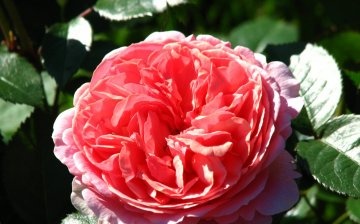
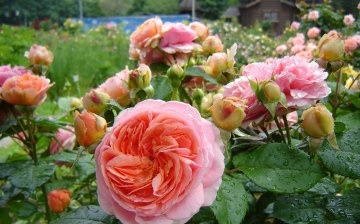

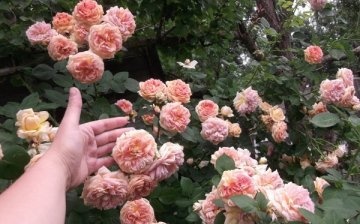
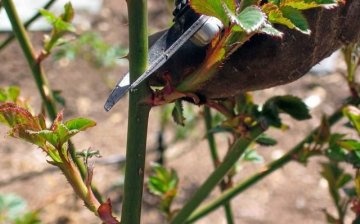
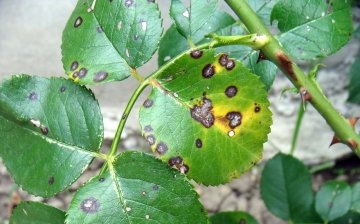
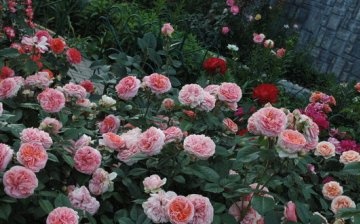
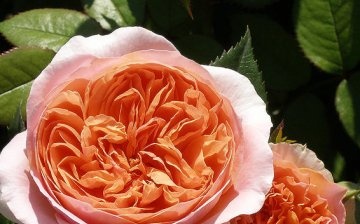








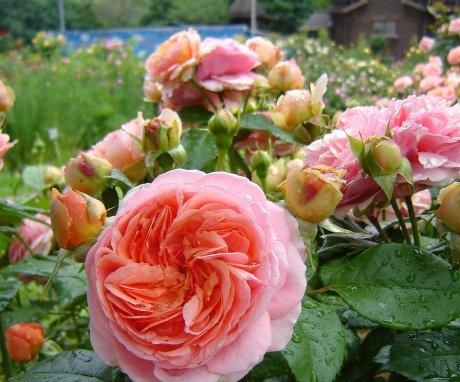

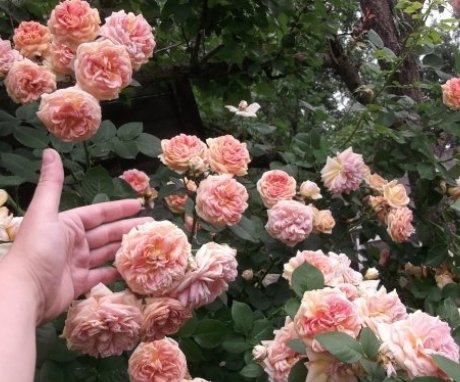
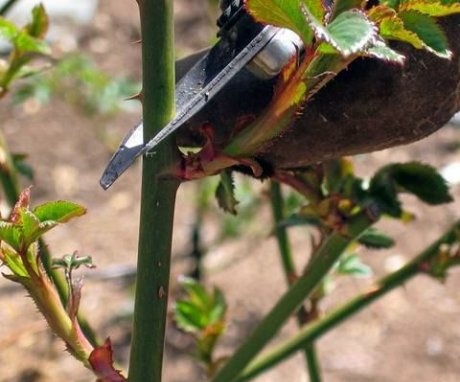
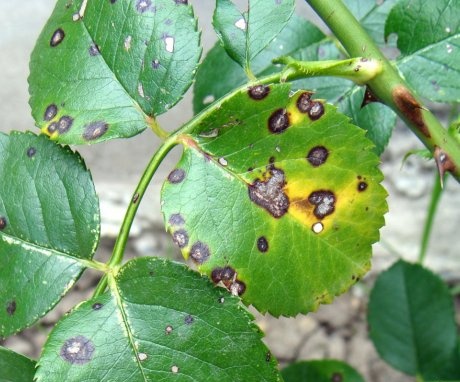
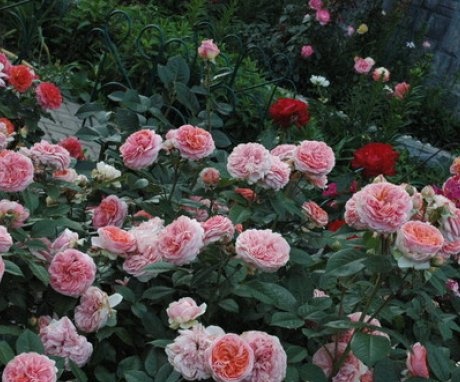

The fact that there are almost no thorns on this type of roses is a nice addition, especially for those who grow roses for sale for bouquets. The color is pleasant and the buds themselves are unusual.